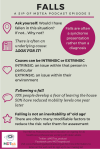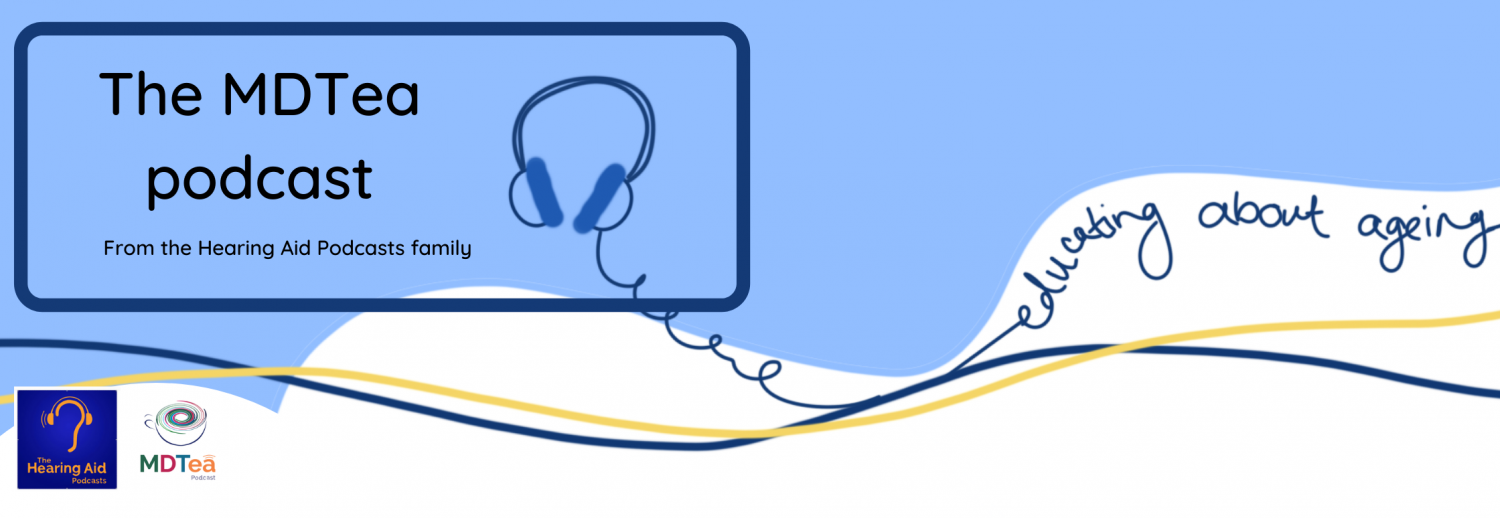Episode 1.5 Acute Management Following a Fall
MDTea Episode 5: Falls – Acute Management
Posted 15th March 2016
Presented by: Jo Preston & Iain Wilkinson, Geriatricians at Surrey and Sussex Healthcare NHS Trust.
Core Faculty Contributors: Sarah Jane Ryan, Physiotherapist at University of Brighton and Pam Trangmar, Physician Associate at Surrey and Sussex Healthcare NHS Trust.
 This episode focuses on the acute management of falls. What causes them, how to approach managing them, and why they are important.
This episode focuses on the acute management of falls. What causes them, how to approach managing them, and why they are important.
Here is this week’s Sip of MDTea
CPD log
Click here to log your CPD online and receive a copy to your email.
You can download the show notes here.
Episode 5 Show Notes
Falls
Presented by: Dr Jo Preston & Dr Iain Wilkinson
Faculty: Sarah Jane Ryan – Physiotherapist
Pamela Trangmar – Physician Associate
Broadcast Date: 15th March 2016
Learning Outcomes
Knowledge:
- To understand the common causes of falls in older adults and outline the initial management.
- To be able to describe a management plan for patients following a fall.
Skills:
- To identify patients at high risk for falling
- To be able to instigate a falls prevention and management strategy for a patient who has fallen.
Attitudes:
- To view a fall as a potentially serious symptom of an underlying medical condition.
Definitions:
Formal / Scientific Definition:
“Inadvertently coming to rest on the ground or other lower level with or without loss of consciousness and other than as a consequence of sudden onset of paralysis, epileptic seizure, excess alcohol intake, or overwhelming external force”
Practical Definition:
A syndrome not a diagnosis and a sign that one of many things are going wrong resulting in instability of a person, leading to a fall. It is often due to a combination of factors, rather than one alone and may be a marker of frailty.
Key Points from Discussion
Causes for falls can be divided into a few categories when diagnosing and considering a management plan:
- Intrinsic or extrinsic e.g. within the person or within their environment
- Transient or permanent e.g. a treatable or permanent condition
- Modifiable and non-modifiable e.g. to optimise or work around
Fear of falling can result in a cycle of worsening mobility that can be difficult to break. CBT can be helpful.
Syncope in older adults is largely investigated and managed in the same way as their younger counterparts.
European Society for Cardiology Syncope Guidelines: www.escardio.org
NICE Guidance on Transient Loss of Consciousness. CG109
Risk of falling increases with age due to accumulation of deficits which links into some theories of frailty. Thinking about falling in terms of thresholds in a similar way: the likelihood of falling increases as the number of deficits increases and compensatory mechanisms decreases. When an inter concurrent stressor occurs, it drops your reserves and you are more likely to fall. This stressor could be biological, social or psychological in origin.
There is conflicting evidence regarding the benefits of falls prevention measures. In one meta-analysis, no benefit was found.
However, a cochrane review in 2012 showed that multifactorial interventions do reduce falls in hospitals. The evidence for exercise as part of this was inconclusive but this is likely due to the short duration, interconcurrent illness, and not looking at longer term outcomes.
One of the perceived failures of many of these studies is the approach within which they are implemented. Either that the bundle itself was too complicated, contains too many components and / or is implemented all in one go, making it appear unachievable. The FALLSAFE project was more successful in implementing widespread change, by using Quality Improvement methodologies comprising staggered interventions with education and support. In this way, interventions are embedded in routine practice before another is introduced. The benefit was not seen necessarily from individual interventions but from the combination of them together.
With anyone who you encounter with falls, consider
- Does this person need referral for CGA?
- Have they injured themselves, do they have a fracture?
- Do they have pain control needs?
- Do they need a bone health assessment?
- Do they need urgent medical review? E.g. palpitations, loss of consciousness, new neurological symptoms.
Curriculum Mapping:
This episode covers the following areas (n.b not all areas are covered in detail in this single episode):
| Curriculum | Area | |
| NHS Knowledge Skills Framework | Suitable to support staff at the following levels:
|
|
| Foundation curriculum | 7. Good Clinical Care
10. Patients with Long-term conditions |
|
| Core Medical Training | Common Competencies
Symptom Based Competencies
Other Important Presentations
System Specific Competencies
|
|
| GPVTS program | Section 2.03 The GP in the Wider Professional Environment
Section 3.03 Care of Acutely Ill People
Section 3.05 – Managing older adults
|
|
| ANP (Draws from KSF) | Sections 5, 6, 8 and 10
Section 7 – in particular
|
|






3 Responses
[…] Episode 1.5 Acute Management Following a Fall […]
[…] 1.05: Post fall management […]
[…] S1E5 – Acute Management following a Fall […]